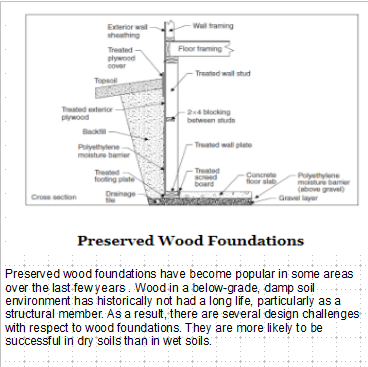Hi Folks,
I am designing a PWF and have a couple of questions regarding the backfilling.
In the Preservative Wood Foundation Design Specification, the average backfilling equivalent fluid pressure is given as 30psf/ft.
1) How's this number (30psf/ft) derived?
2) Is gravel only backfill lighter than average stable soil pressure?
Appreciate your response.
Thanks
I am designing a PWF and have a couple of questions regarding the backfilling.
In the Preservative Wood Foundation Design Specification, the average backfilling equivalent fluid pressure is given as 30psf/ft.
1) How's this number (30psf/ft) derived?
2) Is gravel only backfill lighter than average stable soil pressure?
Appreciate your response.
Thanks

